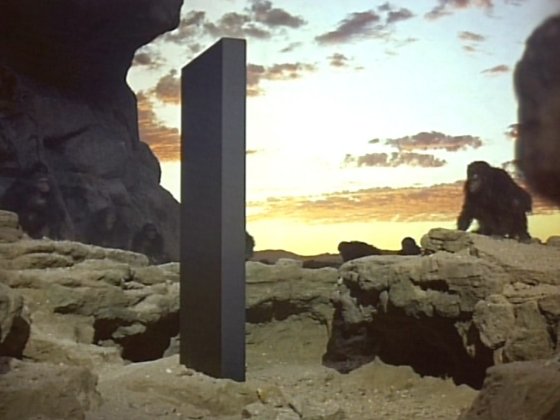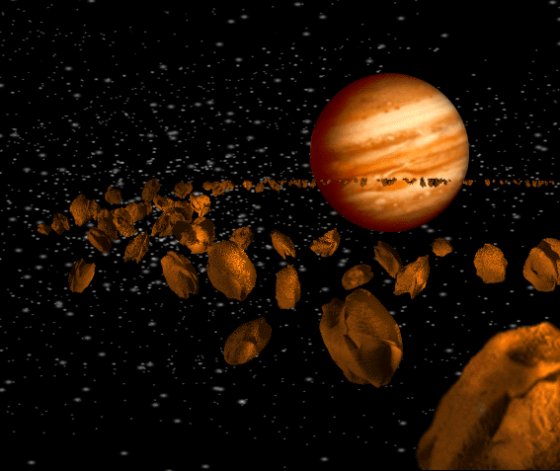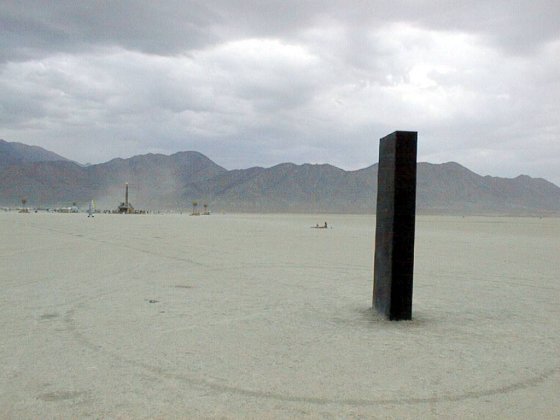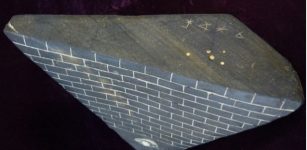Extraterrestrial Artifacts In Our Solar System Could Exist And Observe Us – Scientists Say
MessageToEagle.com – If you are a science fiction fan, then you have most likely read the book or seen the movie 2001: A Space Odyssey.
You will know that the discovery of an alien mysterious black monolith buried beneath the Lunar surface is the beginning of a great space adventure. The discovery of alien artifacts in our cosmic neighborhood would be one of the biggest events in the history of humankind.
Xenoarchaeology, is a broad field of hypothetical science involving the study of the remains of extraterrestrial civilizations. In science fiction, xenoarchaeology is practiced on distant planets, studying extraterrestrial cultures much as one studies ancient civilizations here on our own planet.
The name derives from Greek “xenos”, which means ‘stranger, alien’, and archaeology ‘study of ancients’.
On the Moon we humanity has already registered the remains of the Apollo 11 mission in the so-called Sea of Tranquility as a “Historical Resource.”

“It’s about time that we acknowledged the importance of these sites for mankind,” says Beth O’Leary, an anthropologist at New Mexico State University and the co-founder of the Lunar Legacy Project.
O’Leary and her colleagues have compiled a map identifying the items left at the landing site, as well as a comprehensive list of Apollo’s junk.
Space archaeologists are worried that future missions, or possibly moon tourists, could loot and even destroy this sacred site of earth history.
“Can you imagine someone driving a cart over Neil Armstrong’s first footprint?” warns Peter Capelotti, an anthropologist at Penn State University in Abington, Pennsylvania.
The artifacts of human missions to the moon and Mars are urgently in need of official protection, says Capelotti, “Otherwise we must be prepared to someday see pieces of Apollo 11 listed for sale on eBay.”

Scientists point out we should also not dismiss the possibility that ET artifacts could exists close to our planet and some alien devices might even observe us. One of the reasons we have not found such alien artifacts is because we have not looked in all places, scientists from the Penn State University say.
“The vastness of space, combined with our limited searches to date, implies that any remote unpiloted exploratory probes of extraterrestrial origin would likely remain unnoticed,” said Jacob Haqq-Misra, Rock Ethics Institute, and Ravi Kumar Kopparapu, Earth and Environmental Systems Institute.
So far, we have not found any non-terrestrial artifacts in our solar system. The Fermi paradox, originally formulated by Enrico Fermi, asks, if intelligent life is common, why no technological civilizations have been observed.
Answers to this question could include life is rare, intelligent cultures inevitably destroy themselves, intelligent beings have not gotten here yet or they are here but not revealing themselves. Even without actual contact, like us, other civilizations could be sending unpiloted probes to quietly peek at our civilization.
These probes, like ours, would be small and might be hidden in a variety of places. In the asteroid belt they would probably go unnoticed, especially if these nonterrestrial objects are only 3 to 33 feet in size, weighing little more than a ton.
“Extraterrestrial artifacts may exist in the solar system without our knowledge simply because we have not yet searched sufficiently,” said Haqq-Misra and Kopparapu. “Few if any of the attempts would be capable of detecting a 1 to 10 meter (3 to 33 foot) probe.”

Haqq-Misra and Kopparapu use a probabilistic method to determine if we have looked closely enough anywhere in the solar system to definitively say there are no non-terrestrial objects here. The analysis is based on answering the question: How sure can we be that we should have already found any non-terrestrial objects lurking in the solar system?
They view the solar system as a fixed volume and figure out the percentages of that volume that would need to be thoroughly searched using a discovery capability small enough to detect these probes, assuming that the probes are not consciously camouflaged. The researchers note that most searches to date have not been fine enough to locate such small probes or to totally rule out anywhere.
After taking into account a variety of potential biases, such as “the universe is teeming with life” or “life is rare,” the team developed an equation that can be applied to a portion of the volume of the solar system and determine whether sufficient searching has been done to ensure that we can say there are no non-terrestrial objects within that volume.
The researchers found that it is, at this point, difficult to say that there are not nonterrestrial objects in our solar system.
“The surface of the Earth is one of the few places in the solar system that has been almost completely examined at a spatial resolution of less than 3 feet,” said Haqq-Misra and Kopparapu.
But even as humans have spread across the solid surfaces of the Earth, there are still caves, jungles and deserts as well as the ocean floor and subsurface areas that have not been explored. Even with this, the Earth does have a high confidence that no nonterrestrial artifacts exist.
The moon and Mars have been searched to a small extent. An ongoing mapping project, the Lunar Reconnaissance Orbiter, is looking at the moon at a resolution of about 20 inches, so we may eventually be able to determine if there are no non-terrestrial objects on the moon. The researchers caution that surface maps may not be sufficient to distinguish between a space probe and a rock.
The surface of Mars is still mostly unsurveyed and the researchers’ confidence in the probability of no non-terrestrial artifacts is low. Similarly, locations like the Earth-moon Lagrange points, the asteroid belt and the Kuiper belt might also shelter extra solar system probes, but the vast majority of the solar system’s volume is uninvestigated.
“Searches to date of the solar system are sufficiently incomplete that we cannot rule out the possibility that non-terrestrial artifacts are present and may even be observing us,” said Haqq-Misra and Kopparapu.

The researchers also said that “the completeness of our search for non-terrestrial objects will inevitably increase as we continue to explore the moon, Mars and other nearby regions of space.”
Just because we haven’t yet found any ET artifacts doesn’t mean they do not exist. An alien probe could even orbit our planet and monitor everything it happens here without our knowledge of its existence. Not to mention the possibility that an alien message can be implanted in your DNA. Extraterrestrial technology can be so advanced that it is undetectable to us, byt that should not discourage us.
We need to keep searching…
Copyright © MessageToEagle.com. All rights reserved. This material may not be published, broadcast, rewritten or redistributed in whole or part without the express written permission of MessageToEagle.com
Related Posts
-
 Uplistsikhe: Ancient City-Fortress Of Queen Tamar – Extraordinary Ruler Dubbed ‘King of Kings and Queen of Queens’
No Comments | Jul 10, 2016
Uplistsikhe: Ancient City-Fortress Of Queen Tamar – Extraordinary Ruler Dubbed ‘King of Kings and Queen of Queens’
No Comments | Jul 10, 2016 -
 Mystery Of Jupiter’s Incredible Journey To Our Solar System Revealed
No Comments | Mar 28, 2019
Mystery Of Jupiter’s Incredible Journey To Our Solar System Revealed
No Comments | Mar 28, 2019 -
 Secrets Of Extraterrestrial Entity ‘Cthulhu’ Revealed By Scientists
No Comments | Oct 6, 2015
Secrets Of Extraterrestrial Entity ‘Cthulhu’ Revealed By Scientists
No Comments | Oct 6, 2015 -
 Iceland’s Volcano Eruptions Could Continue For Decades – Study Shows
No Comments | Jul 1, 2024
Iceland’s Volcano Eruptions Could Continue For Decades – Study Shows
No Comments | Jul 1, 2024 -
 Mysterious Artifacts: Glowing Black Pyramid With The Third Eye
No Comments | Sep 21, 2014
Mysterious Artifacts: Glowing Black Pyramid With The Third Eye
No Comments | Sep 21, 2014 -
 Stunning Underwater Photos Reveal Secrets Of Legendary Lost City Of Heracleion
No Comments | May 4, 2013
Stunning Underwater Photos Reveal Secrets Of Legendary Lost City Of Heracleion
No Comments | May 4, 2013 -
 ‘Lios na Grainsi’ – Ireland’s Largest Stone Circle
No Comments | Feb 3, 2016
‘Lios na Grainsi’ – Ireland’s Largest Stone Circle
No Comments | Feb 3, 2016 -
 Kingdom Of Nubia: Pyramids And Priceless Secrets Of A Civilization Forgotten By History And Neglected By Archaeology
No Comments | Nov 5, 2015
Kingdom Of Nubia: Pyramids And Priceless Secrets Of A Civilization Forgotten By History And Neglected By Archaeology
No Comments | Nov 5, 2015 -
 Seychelles Islands Are Sinking And Will Soon Disappear Underwater
No Comments | Jun 10, 2016
Seychelles Islands Are Sinking And Will Soon Disappear Underwater
No Comments | Jun 10, 2016 -
 Hyponatremia: Danger Of Drinking Too Much Water In A Short Time
No Comments | Feb 11, 2016
Hyponatremia: Danger Of Drinking Too Much Water In A Short Time
No Comments | Feb 11, 2016
